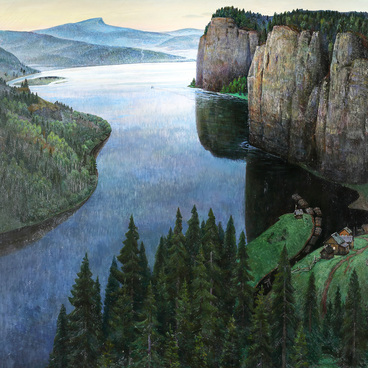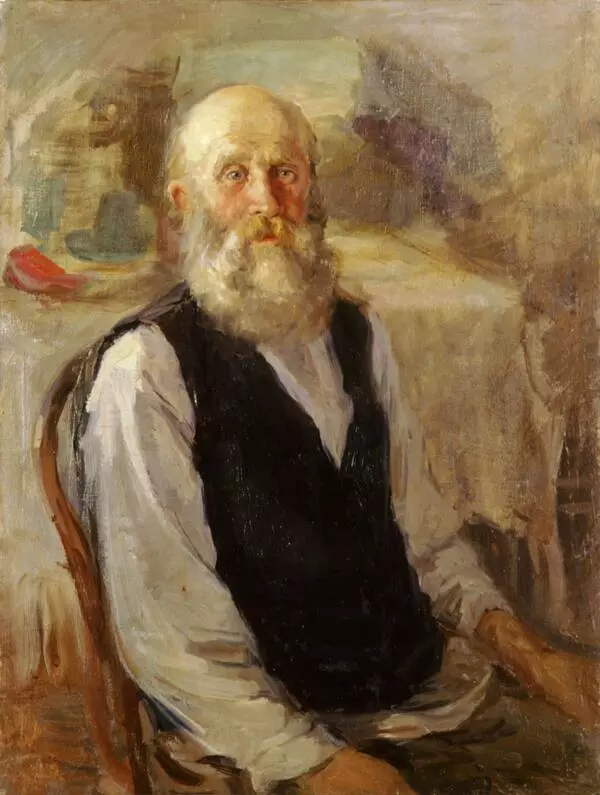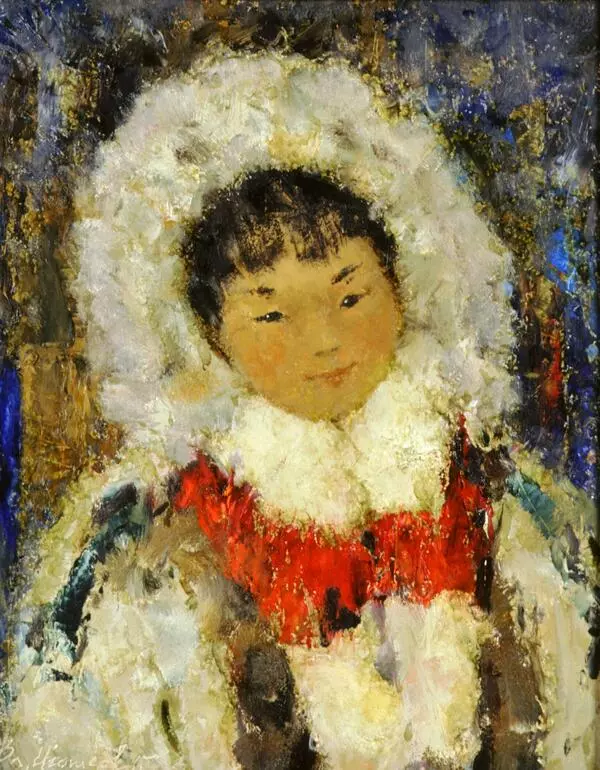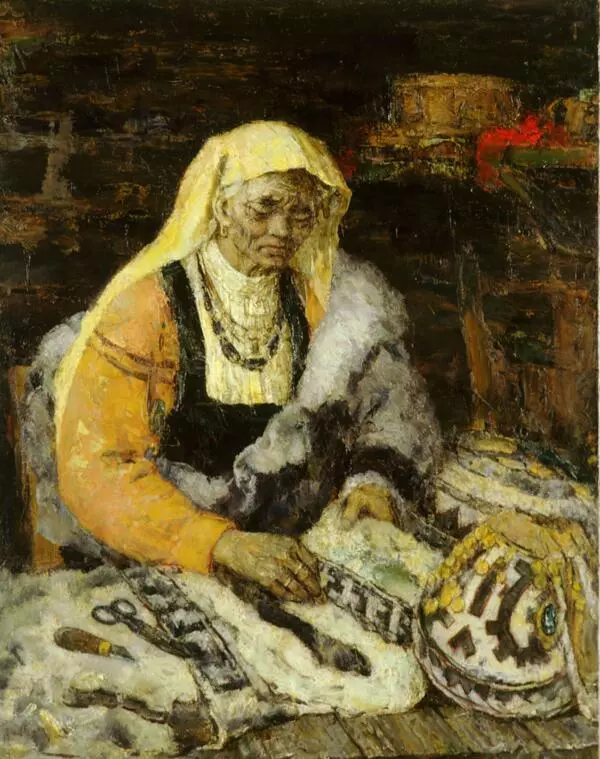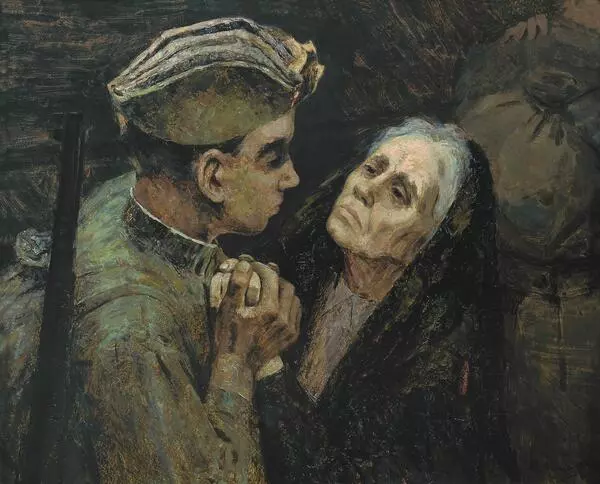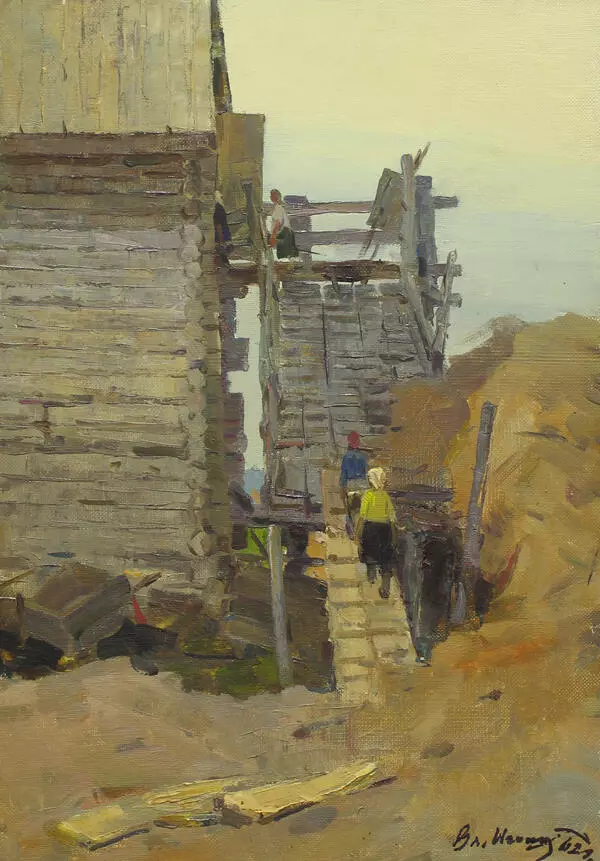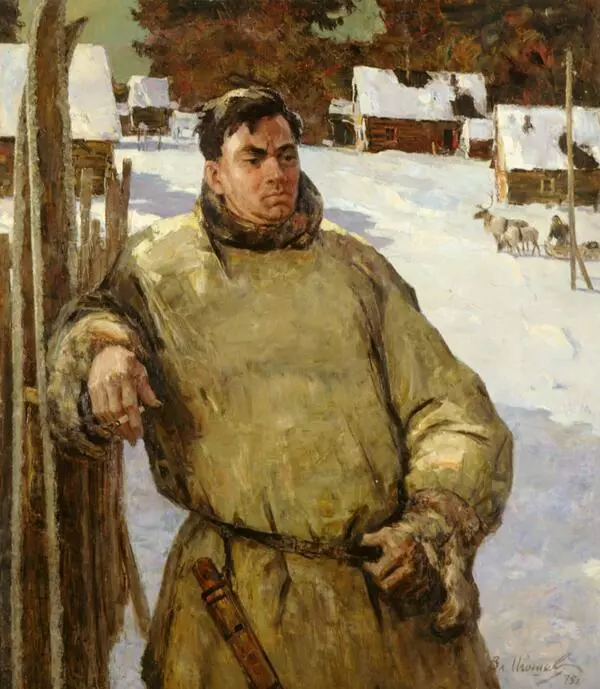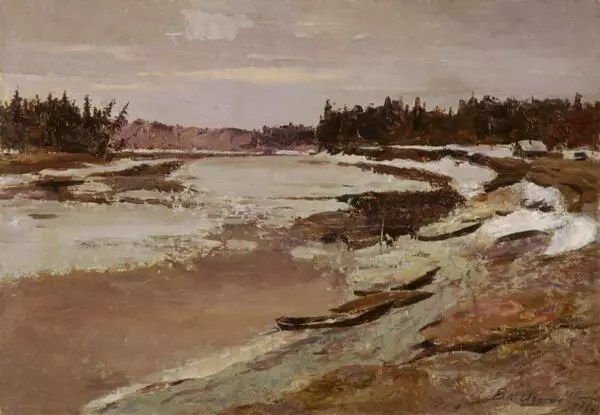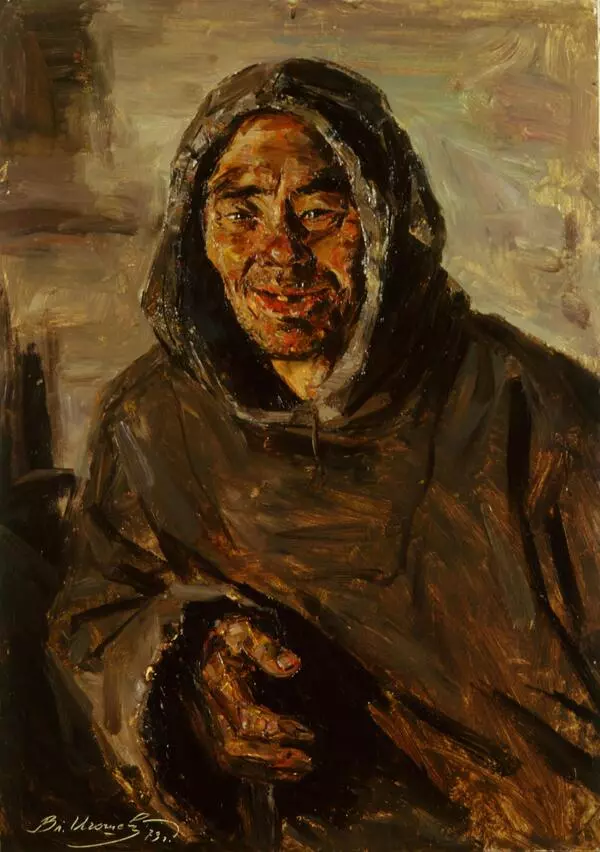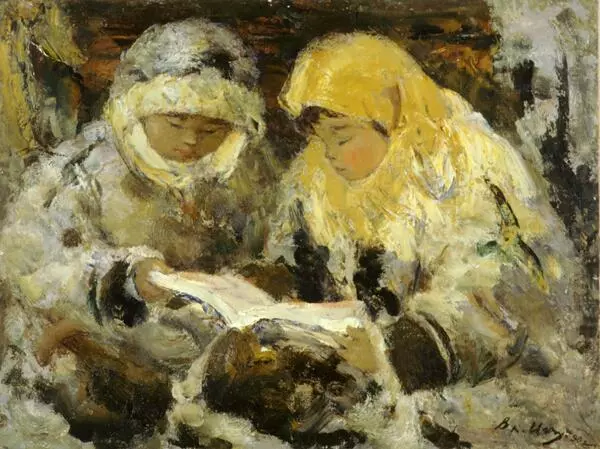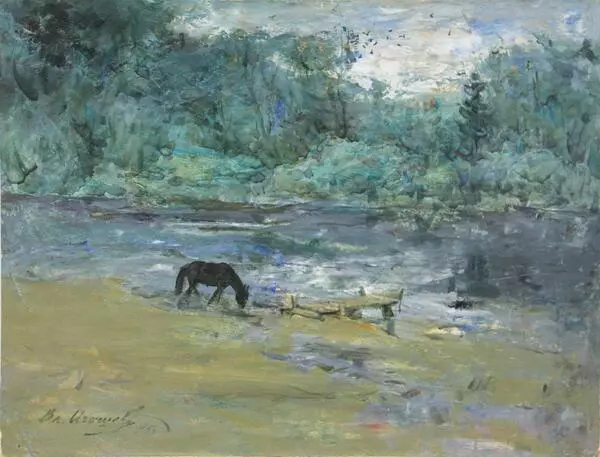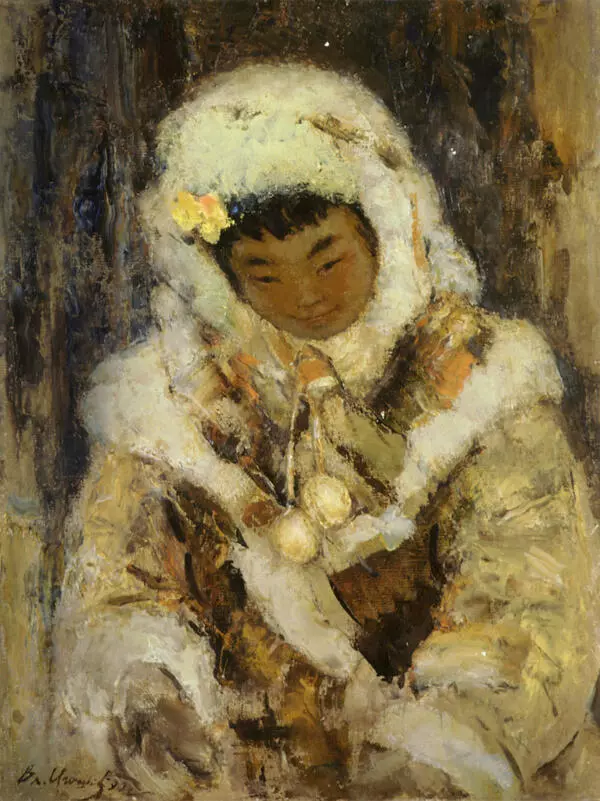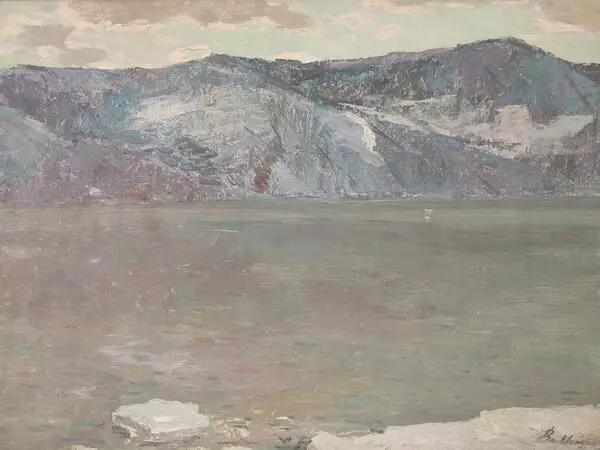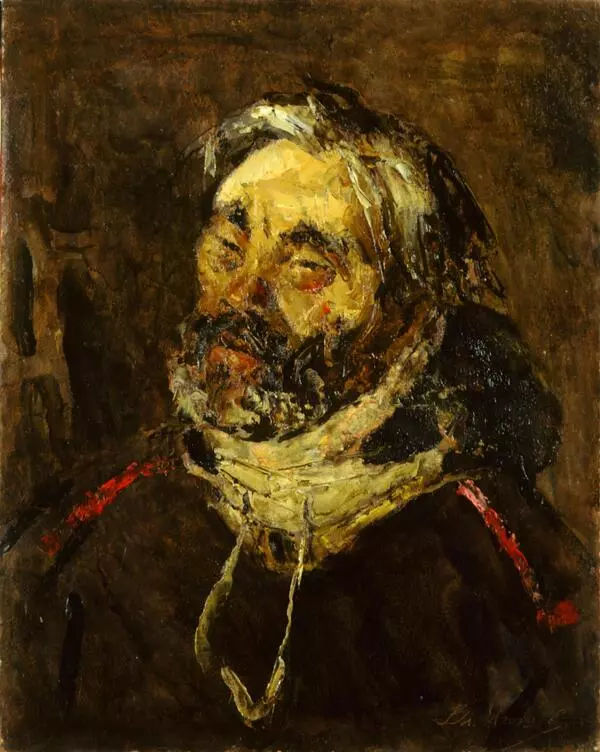Throughout his career, Vladimir Aleksandrovich Igoshev explored the farthest corners of the country. In the 1950s, he got so inspired by a trip to Yugra that he created a series of paintings dedicated to this ancient place and its indigenous inhabitants — the Mansi people. The artist’s experience in the Tuvan Autonomous Oblast led to the creation of new paintings associated with this land. Among them is the “Portrait of an Elderly Chaban Shepperd” painted in 1965, when the artist resided in Sverdlovsk.
This painting reflects Igoshev’s unique painting style. He strove to depict wholesome people whose lives were seamlessly connected with the environment of their homeland and their occupations. Those were working people from a seemingly prosaic world who were portrayed by the enthusiastic artist as deeply immersed in their native atmosphere, shown through the typical faces, clothes, and furnishings.
The portrait depicts an elderly, gray-bearded Tuvan shepherd with his face tanned by the winds and the sun and lined with deep wrinkles. The sitter’s bright clothes have an ethnic look. The man is dressed in traditional outerwear. Those long-skirted clothes had practically the same cut for men and women; they had a cloth belt worn over and were adapted for riding and nomadic lifestyle. The man is also wearing a traditional warm fur hat called malachai.
The character’s expressive insightful image is a wonderful example of the artist’s realistic portrait technique. Igoshev succeeded in capturing those specific features and peculiarities of an experienced, strong and determined person working in harsh environmental conditions. At the same time, the artist managed to perfectly render the typical features and occupations of the people he depicted.
Tuvan nomadic pastoralism, which was distinguished by its own special breed of sheep, had been practiced for centuries and was present even in the mid-20th century. In the 1960s, shepherds worked on local collective farms using the experience and methods of their ancestors. With this portrait, Vladimir Igoshev showed one of the representatives of this long-established occupation and at the same time revealed his brilliant painting skills: he used light, virtuoso brushstrokes and tonal values to highlight the features of the fabrics and fur of the man’s hat.
This painting reflects Igoshev’s unique painting style. He strove to depict wholesome people whose lives were seamlessly connected with the environment of their homeland and their occupations. Those were working people from a seemingly prosaic world who were portrayed by the enthusiastic artist as deeply immersed in their native atmosphere, shown through the typical faces, clothes, and furnishings.
The portrait depicts an elderly, gray-bearded Tuvan shepherd with his face tanned by the winds and the sun and lined with deep wrinkles. The sitter’s bright clothes have an ethnic look. The man is dressed in traditional outerwear. Those long-skirted clothes had practically the same cut for men and women; they had a cloth belt worn over and were adapted for riding and nomadic lifestyle. The man is also wearing a traditional warm fur hat called malachai.
The character’s expressive insightful image is a wonderful example of the artist’s realistic portrait technique. Igoshev succeeded in capturing those specific features and peculiarities of an experienced, strong and determined person working in harsh environmental conditions. At the same time, the artist managed to perfectly render the typical features and occupations of the people he depicted.
Tuvan nomadic pastoralism, which was distinguished by its own special breed of sheep, had been practiced for centuries and was present even in the mid-20th century. In the 1960s, shepherds worked on local collective farms using the experience and methods of their ancestors. With this portrait, Vladimir Igoshev showed one of the representatives of this long-established occupation and at the same time revealed his brilliant painting skills: he used light, virtuoso brushstrokes and tonal values to highlight the features of the fabrics and fur of the man’s hat.
